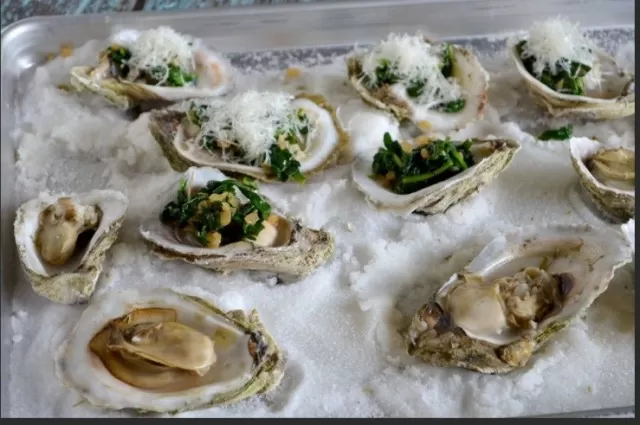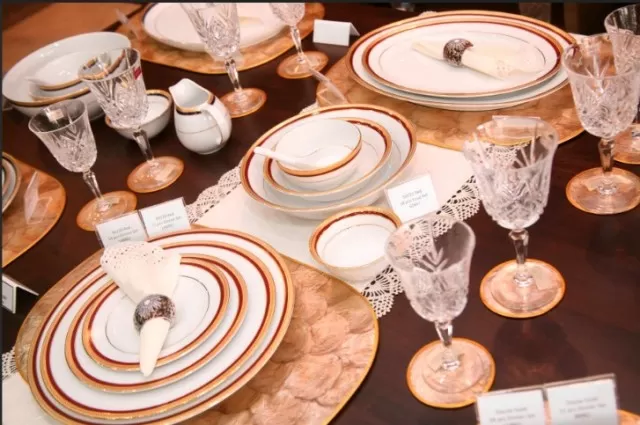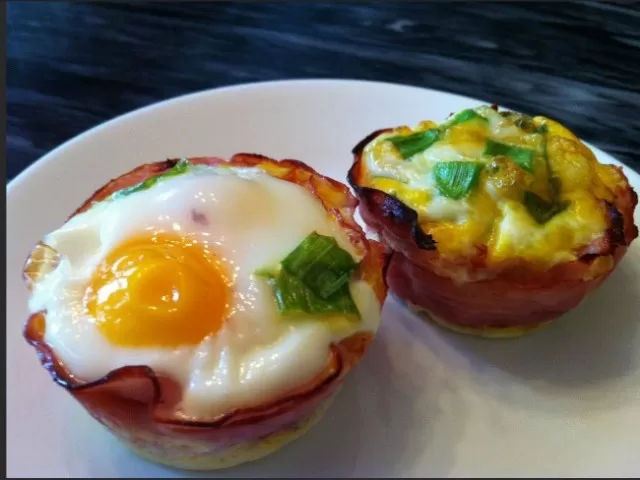Rarely Seen Dining Table Items Today.The dining room tables of yesteryear were steeped in tradition, etiquette, and undeniable elegance. However, the era of meticulously set tables, complete with an array of specialized utensils for each course, has faded into the past. Modern times have ushered in a more relaxed and budget-conscious approach to dining at home, with people embracing utilitarian tableware that reflects their personal style. Join us as we take a nostalgic journey to discover eight old-fashioned types of tableware that are unlikely to make a comeback in today’s dining scene.
Era of Specialized Forks: Culinary Utensils of the Early 20th Century

In the early 20th century, the world of dining utensils saw an explosion of specialized forks, each designed for a specific culinary purpose.
On dining tables, you’d find a vast array of these distinctive forks, from olive forks and fish forks to salad forks, oyster forks, pickle forks, and pastry forks. These utensils were not exclusive to the elite; even middle-class households embraced them.
Each fork was meticulously crafted with a particular shape and number of tines intended to facilitate specific dining tasks.
However, the proliferation of these specialized forks often led to confusion in dining etiquette. Today, the simplicity of the four-pronged dinner fork has become the norm, while their uniquely pronged cousins have found their place in the annals of antique stores.
The evolution of forks from a diverse array of specialized tools to a standardized dining utensil showcases how culinary culture has adapted over time, simplifying our dining experiences while preserving the memory of these fanciful, task-specific utensils.
Napkin Rings: A Nifty Nostalgic Necessity
Napkin rings, those elegant yet functional table accessories, might appear as mere decorative items, but their history reveals a practical purpose.
In times when laundry was a laborious and less frequent task, napkin rings served as essential tools for keeping track of whose napkin belonged to whom.
These traditional napkin rings were often engraved with individual monograms, one for each family member.
This seemingly ornamental touch had a very practical function: it ensured that everyone in the household used the same napkin until laundry day arrived. This practice was particularly beneficial for middle-class families who couldn’t afford the luxury of fresh linens every day.
In essence, napkin rings were a clever solution to maintain hygiene and conserve resources in a time when both were precious commodities.
While modern laundry practices have evolved significantly, the legacy of napkin rings reminds us of an era when every resource, even a simple piece of fabric, was used wisely and efficiently.
Evolving Stemware: From Specialized to Versatile

In days gone by, having the appropriate stemware for every type of beverage was considered a mark of sophistication.
This meant a vast array of glasses designed specifically for water, white wine, red wine, champagne, and more. The experience of sipping from a well-matched glass was once seen as essential to fully appreciating a drink.
However, as time has passed, the culture around wine and beverage consumption has evolved.
The average drinker today tends to be less rigid in their glassware choices. While some wine enthusiasts still maintain a collection of precisely sized glasses for different varietals, many people have embraced a more relaxed approach.
In the modern era, one-size-fits-all Wine Glasses, stemless tumblers, and even unconventional vessels like Mason jars have become acceptable choices for enjoying a wide range of beverages.
This shift reflects a broader trend towards casual and unpretentious enjoyment, where the focus is on the experience and the company rather than adhering to strict conventions of stemware. Ultimately, it’s a testament to the evolving and inclusive nature of contemporary drinking culture.
Evolving Traditions: Rethinking Wedding China
For generations, selecting a set of fine china has been a cherished tradition for brides-to-be when creating their wedding registries.
These elegant place settings symbolized the hope of hosting countless future dinner parties and the aspiration of passing down these dishes as cherished family heirlooms.
However, as the dynamics of modern life shift, many couples are finding themselves in a different culinary landscape.
The convenience of food delivery and the evolving nature of social gatherings mean that formal place settings often don’t align with their lifestyle. For some, the desire to own and maintain fine china has waned.
In today’s world, many couples are choosing to forgo the expense of high-end plates, bowls, and cups in favor of more affordable, practical options.
This shift allows them to allocate their gift dollars to other aspects of their lives, whether that’s investing in experiences, travel, or other items that better suit their current needs and aspirations.
The evolving perception of wedding gifts reflects a broader trend toward personalization and practicality, where couples are empowered to prioritize what truly matters to them as they embark on their journey together.
It’s a reminder that traditions can adapt to the changing times and the unique preferences of each generation.
Egg Cups: A Quaint Relic of Breakfasts Past

Egg cups, with their quaint and charming appearance, once held a practical role in the world of breakfast dining.
Their primary function was to keep soft-boiled eggs stable on your plate, ensuring that your morning meal was as tidy as it was delicious.
However, as culinary trends have shifted and the appeal of the perfectly timed soft-boiled egg has diminished, these egg cups have transitioned from functional kitchenware to mere cupboard ornaments.
Today, they often serve as decorative relics, evoking nostalgia for a bygone era of leisurely breakfasts and a more unhurried pace of life.
While egg cups may have lost their primary role in the modern kitchen, they still carry a sense of charm and tradition, making them cherished collectibles for some and a whimsical reminder of breakfasts past for others.
So, even if they no longer hold a prominent place on the breakfast table, egg cups continue to evoke a sense of nostalgia and elegance in kitchens around the world.
*The information is for reference only.